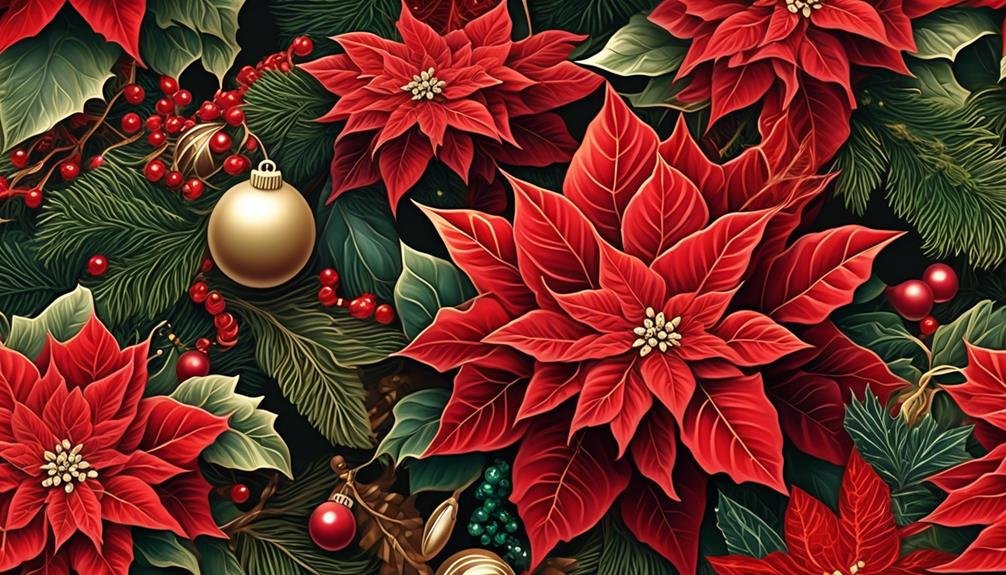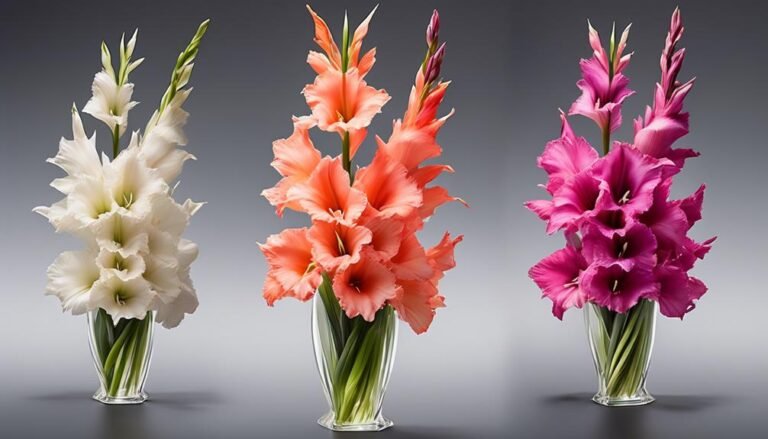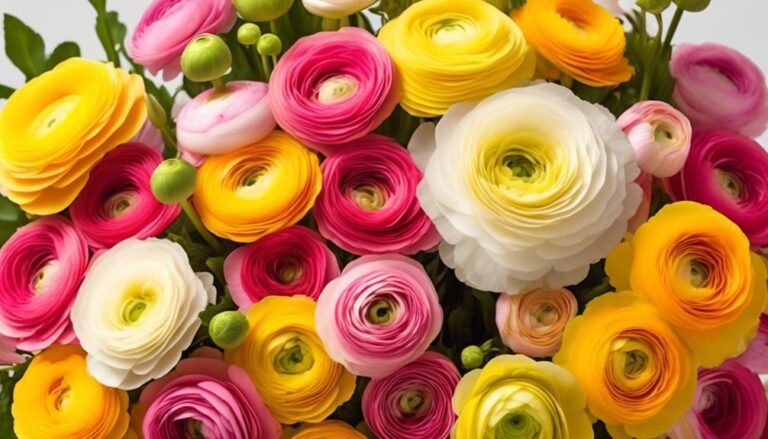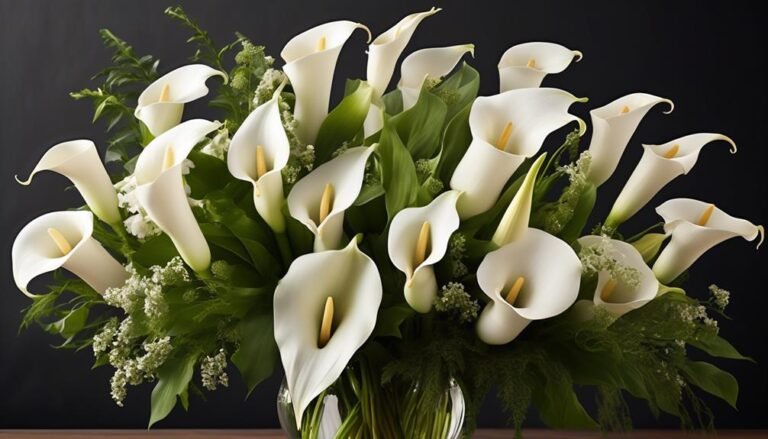Popular Types of Florist Flowers – Poinsettia
The poinsettia is a popular florist flower known for its fiery red leaves that symbolize holiday cheer. Beyond its seasonal symbolism, the poinsettia offers a fascinating world of botanical intricacies. From its scientific name, Euphorbia pulcherrima, to the array of varieties available, the poinsettia holds a wealth of information waiting to be uncovered. Whether you're a seasoned horticultural enthusiast or simply curious about this ubiquitous holiday favorite, there's much to learn about the poinsettia's rich history, unique characteristics, and care requirements.
Scientific Name of the Poinsettia:
The poinsettia's scientific name is Euphorbia pulcherrima, and it belongs to the Euphorbiaceae family. This striking plant is native to Mexico, where it is known as 'La Flor de la Nochebuena,' or the Flower of the Holy Night, in reference to its association with Christmas.
Varieties of Poinsettias:
Poinsettias come in a variety of colors and patterns, including traditional red, white, pink, and speckled or marbled varieties. Some popular varieties include 'Jingle Bells,' 'Winter Rose,' and 'Ice Punch,' each offering a unique twist on the classic poinsettia.
Care Requirements for Poinsettias:
Poinsettias thrive in well-drained soil and prefer bright, indirect light. They should be watered when the soil feels dry to the touch, and it's important to avoid overwatering. With proper care, poinsettias can maintain their vibrant colors throughout the holiday season and beyond.
History and Symbolism of Poinsettias:
The poinsettia's association with Christmas dates back to 16th-century Mexico, where legend has it that a young girl's humble gift of weeds miraculously transformed into vibrant red flowers. This heartwarming tale has cemented the poinsettia as a symbol of holiday joy and goodwill.
In conclusion, the poinsettia's scientific name, varieties, care requirements, and rich history make it a fascinating subject for horticultural enthusiasts and holiday enthusiasts alike. Whether adorning a festive centerpiece or brightening a home during the holiday season, the poinsettia's enduring charm continues to captivate and delight.
Scientific Name
The poinsettia plant, scientifically known as Euphorbia pulcherrima, belongs to the Euphorbiaceae family. The genus name 'Euphorbia' is a tribute to Euphorbus, the Greek physician to King Juba II of Numidia, who used a plant in the genus for medicinal purposes. The species name 'pulcherrima' means 'very beautiful,' reflecting the plant's striking appearance.
The poinsettia has a rich cultural history, originating from Mexico and holding significant importance in traditions. The poinsettia, also known as Cuetlaxochitl by the Aztecs, was admired for its beauty and practical uses. Its red bracts were used to make dye, and its white sap was utilized to treat fevers. With the arrival of Spanish settlers, the poinsettia's cultural significance expanded as it became part of Nativity processions, symbolizing the Star of Bethlehem.
Over time, the poinsettia became synonymous with Christmas, with its red and green foliage complementing the festive colors associated with the season.
Background History
The poinsettia plant has a rich historical journey that sheds light on its cultural significance and economic impact. Originating from Mexico, it has been a symbol of purity and has a strong association with Christmas traditions, dating back to the 17th century. This vibrant plant was used in traditional Nativity processions, adding a touch of beauty and symbolism to the celebrations.
In the United States, the poinsettia industry is thriving, with an estimated annual worth of over $250 million. Millions of poinsettia plants are sold during the holiday season, making it a major player in the floral market. The plant's journey to the United States by Joel Roberts Poinsett not only popularized it but also significantly influenced the American floral industry, adding an emotional depth to its cultural significance and economic impact.
Physical Description
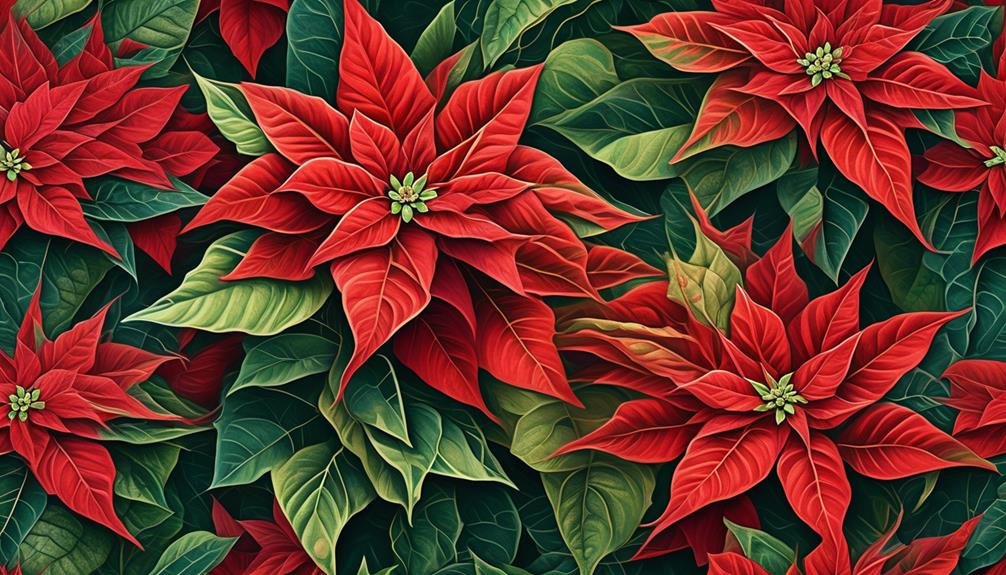
Poinsettia plants are known for their vibrant appearance, with dark green dentate leaves measuring 7-16 centimeters in length.
The colored bracts, often mistaken for flower petals, are actually leaves that can change color in response to light and darkness.
During the holiday season, these bracts can be found in various colors such as red, white, pink, and speckled variations.
Poinsettias are considered semi-evergreen, typically losing most leaves during the winter months.
Despite this, they're resilient and can thrive under the right conditions, making them popular choices for festive decorations and gifts.
Colours and Characteristics
Poinsettia bracts come in a wide range of vibrant colors, including red, white, pink, and bi-color variations, offering options to suit different preferences and decor schemes. The bracts can also exhibit marbling, speckling, and variegation, adding visual interest to holiday decorations.
Known for their long-lasting color, poinsettia bracts retain their vibrant hues for weeks, making them ideal for festive adornments.
Additionally, poinsettias are available in compact, bushy growth or more open, tree-like forms, providing versatility in incorporating them into different settings and designs.
Their captivating colors and diverse growth habits make poinsettias popular for enhancing holiday arrangements and decorations, creating an inviting and festive atmosphere.
Varieties Available
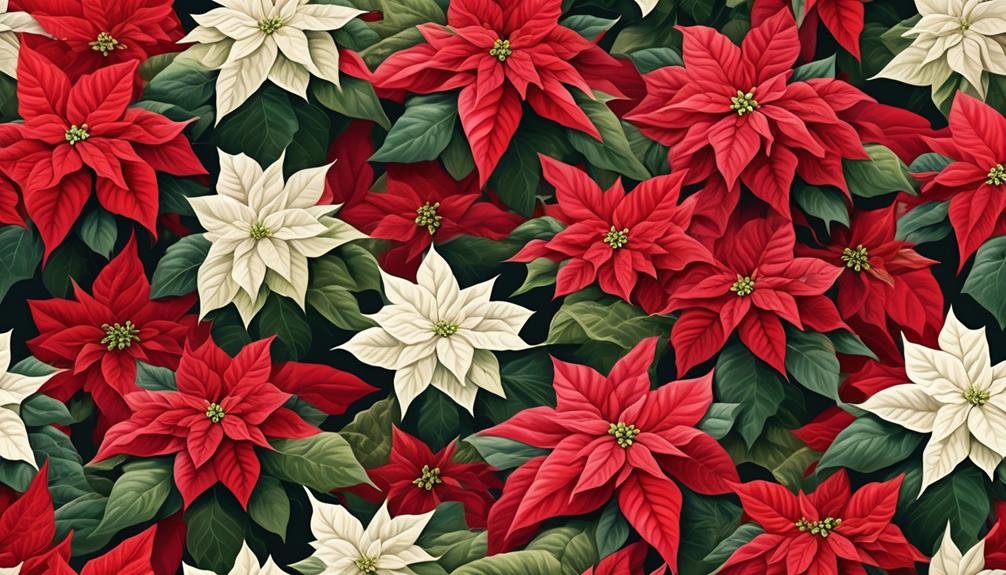
Poinsettias come in a wide variety of colors, sizes, and leaf patterns, offering options to suit different preferences and design needs. Unique hybrids with speckled or marbled leaves, as well as different leaf shapes and textures, have been developed to cater to specific aesthetic tastes.
In addition to the traditional red, white, and pink poinsettias, non-traditional colors such as peach, yellow, and orange are also available, providing a modern twist on this holiday plant.
Poinsettias also vary in size, from compact options suitable for tabletop displays to larger, bushier varieties that make a striking statement in grand arrangements.
The diverse selection ensures that there's a poinsettia variety to complement any holiday setting.
Seasonal Availability
Poinsettias are a popular choice for holiday decorations due to their seasonal availability in December and January. Their vibrant red, white, or pink colors evoke a sense of warmth and joy, making them an essential part of holiday decor. Florists experience a surge in orders for poinsettias during the winter months, reflecting their association with Christmas and the winter season.
The limited availability of poinsettias during December and January adds a special allure to these flowers, making them highly coveted for holiday gatherings and decorations. Their seasonal availability adds to the anticipation and excitement of the festive season, creating a sense of tradition and nostalgia. Poinsettias' popularity during the holidays is deeply rooted in tradition and their ability to bring a cheerful and festive ambiance to any setting.
Care Tips
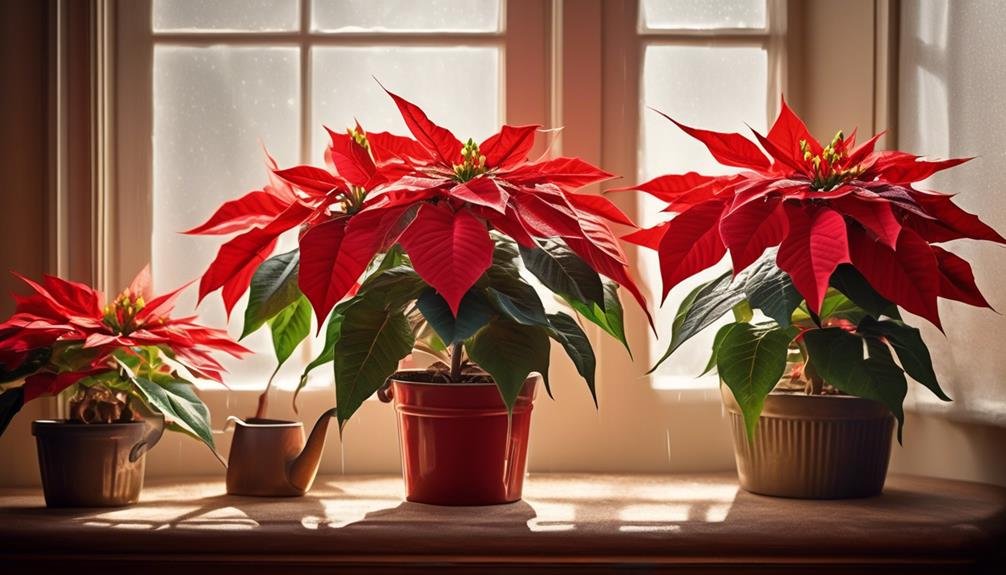
Poinsettias are a great addition to indoor spaces, not only for festive charm but also for their air-purifying benefits. These plants effectively remove pollutants like formaldehyde and airborne bacteria, improving the air quality in your home. To maximize their air-purifying abilities, place poinsettias in well-lit rooms where you spend a lot of time, such as the living room or bedroom.
When caring for poinsettias, it's important to avoid overwatering. Only water the plant when the soil feels dry to the touch to prevent root rot. Additionally, maintain a consistent temperature of 65-75°F (18-24°C) and humidity levels between 40-60% to ensure the plant's optimal growth and longevity.
It's essential to keep poinsettias out of reach of children and pets. While not highly toxic, the milky sap in poinsettias can cause skin irritation, and ingestion may lead to mild stomach discomfort. Proper handling and care of poinsettias can minimize any potential risks associated with their toxicity.
What makes Forget Me Nots a popular choice among florist flowers?
Forget Me Nots are popular florist flowers types because of their delicate blue blooms and long-lasting nature. They symbolize remembrance and true love, making them a meaningful choice for various occasions. Their dainty appearance and versatility in floral arrangements make them a go-to option for florists and their customers.
Conclusion
Poinsettias, scientifically known as Euphorbia pulcherrima, are popular florist flowers prized for their vibrant colors. They're readily available for purchase and can last for weeks as cut flowers. Proper care, including adequate lighting, watering, and temperature maintenance, is essential for their longevity.
Poinsettias are a beautiful addition to holiday decorations and are a safe choice for most people, including those with latex allergies due to their low allergenic properties.
